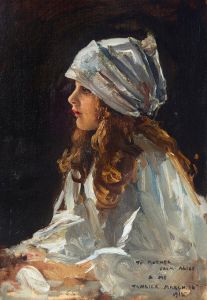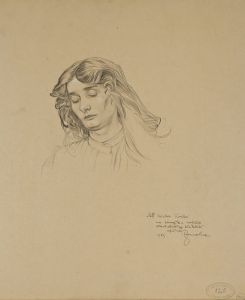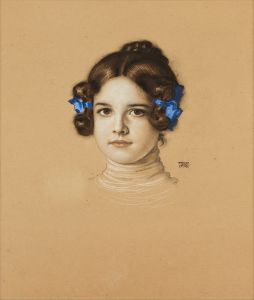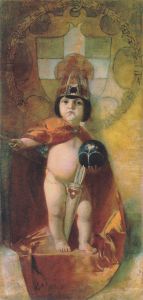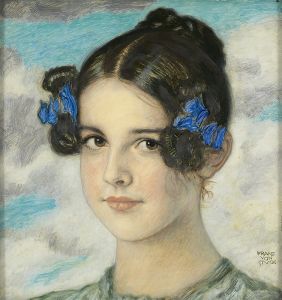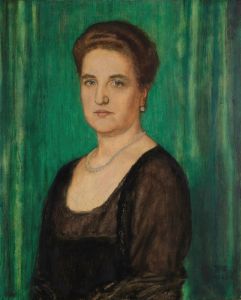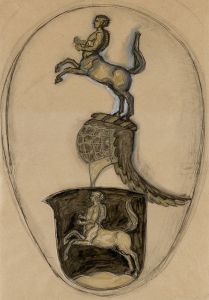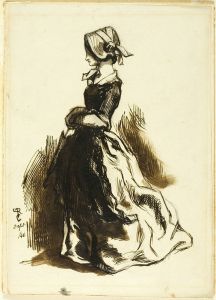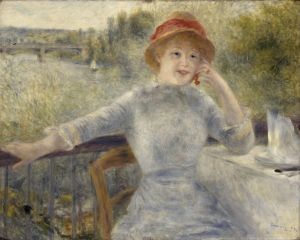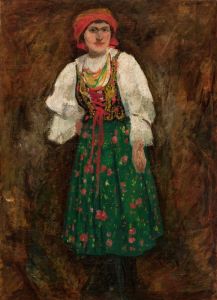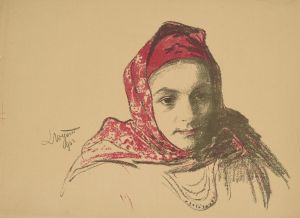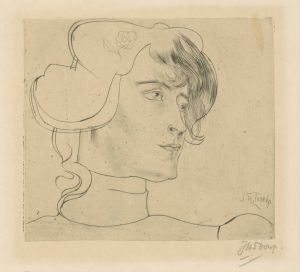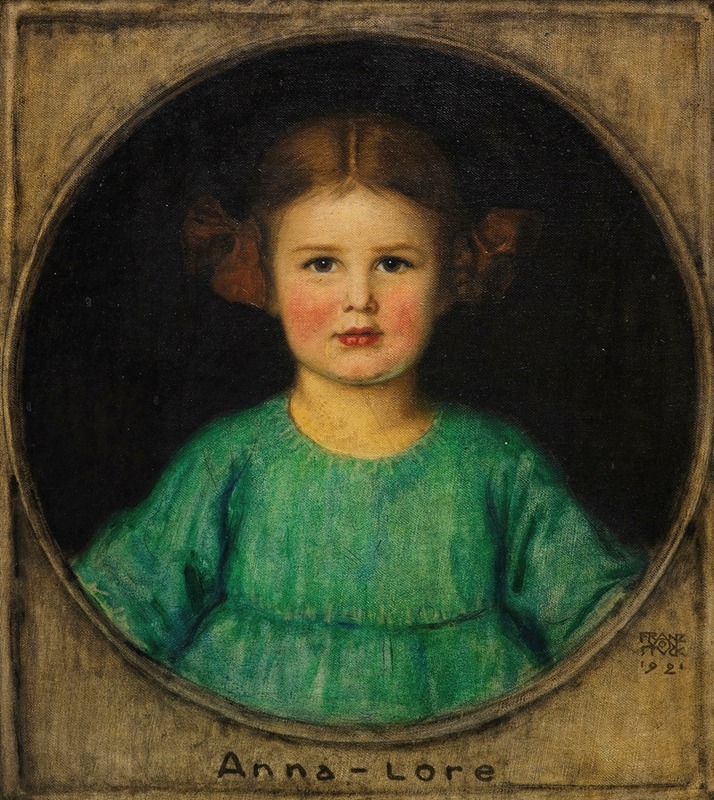
Mädchenbildnis
A hand-painted replica of Franz von Stuck’s masterpiece Mädchenbildnis, meticulously crafted by professional artists to capture the true essence of the original. Each piece is created with museum-quality canvas and rare mineral pigments, carefully painted by experienced artists with delicate brushstrokes and rich, layered colors to perfectly recreate the texture of the original artwork. Unlike machine-printed reproductions, this hand-painted version brings the painting to life, infused with the artist’s emotions and skill in every stroke. Whether for personal collection or home decoration, it instantly elevates the artistic atmosphere of any space.
Franz von Stuck was a prominent German painter, sculptor, and architect, associated with the Symbolist movement. Born in 1863, he became one of the founding members of the Munich Secession, a group that sought to break away from traditional academic art and explore more modern and innovative approaches. Stuck's work is often characterized by its mythological themes, dramatic use of light and shadow, and a distinctive style that blends realism with symbolism.
One of Stuck's notable works is "Mädchenbildnis," which translates to "Portrait of a Young Girl." This painting exemplifies Stuck's skill in capturing the delicate features and innocence of youth, while also imbuing the portrait with a sense of mystery and depth. The artwork reflects Stuck's interest in the human form and his ability to convey emotion and character through portraiture.
"Mädchenbildnis" showcases Stuck's mastery of technique, particularly in his use of color and texture. The painting likely features a young girl, rendered with a soft palette that highlights her youthful complexion and delicate features. Stuck's attention to detail is evident in the way he captures the subtle play of light on the subject's face and hair, creating a lifelike and engaging image.
The background of the painting is typically subdued, allowing the viewer's focus to remain on the subject. This approach is consistent with Stuck's style, where the emphasis is often on the figure itself rather than the surrounding environment. The simplicity of the background also serves to enhance the emotional impact of the portrait, drawing the viewer into the world of the young girl.
Franz von Stuck's work, including "Mädchenbildnis," is often associated with the broader Symbolist movement, which sought to express ideas and emotions through symbolic imagery and themes. While "Mädchenbildnis" is a portrait, it also carries an air of introspection and contemplation, inviting viewers to ponder the inner life and thoughts of the subject.
Stuck's influence extended beyond painting; he was also an accomplished sculptor and architect. His home and studio in Munich, known as the Villa Stuck, is a testament to his artistic vision and remains a museum dedicated to his work. The villa is an example of his architectural prowess and is decorated with many of his artworks, offering insight into his creative process and the breadth of his talents.
"Mädchenbildnis" is a testament to Franz von Stuck's ability to blend technical skill with emotional depth, creating a portrait that resonates with viewers on multiple levels. His work continues to be celebrated for its contribution to the Symbolist movement and its enduring impact on the art world. While specific details about the painting's creation and history may be limited, its place within Stuck's oeuvre highlights his enduring legacy as a master of portraiture and symbolism.





